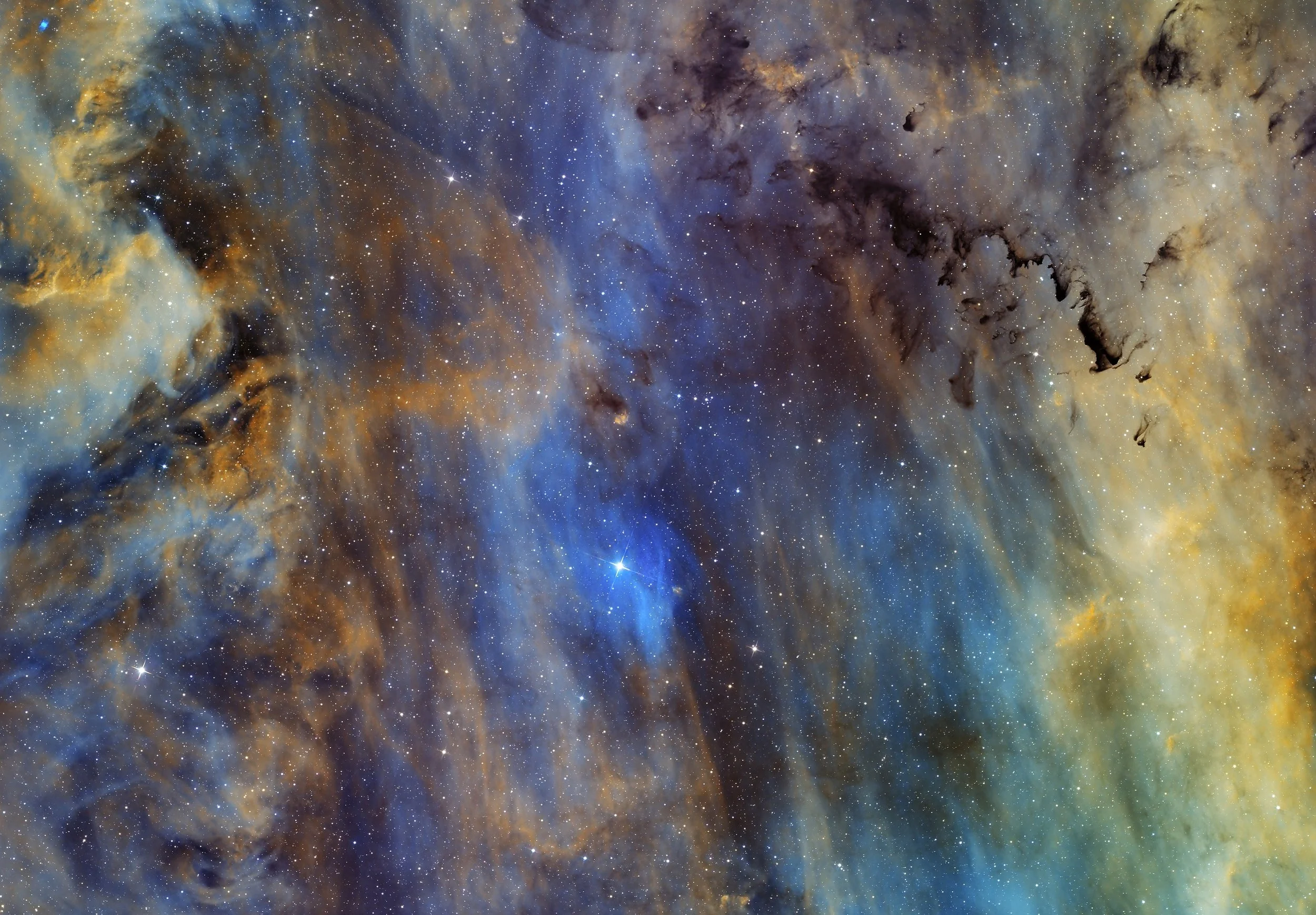SH2-119. The clamshell nebula
Date image was taken: August 08, 2023
Location: Castillejar, Andalusia, Spain
Image Description and Details: 2200 years ago, when the photons of light left this nebula to reach us, the Earth was definitely another place. The cosmic time machine, the telescope, this time was pointed towards the constellation Cygnus, more precisely towards Sh2-119. Gas and dust envelop the main star, 68-Cygni being mostly responsible for the ionization of the gas around it. This ionization makes the gases all colored at different wavelengths, from blue to green, passing through all shades of brown and orange. The dark nebula filaments above contrast strongly with both the glow of the nebula and the rich field full of stars in the background. These filaments are clouds containing mostly gas (hydrogen and helium) and a minimal fraction of dust (about 1%), responsible for the appearance of the cloud. These dusts, although minimal, absorb the light, making the nebula completely dark. Sh2-119 is a celestial signature of an ancient explosion that released gas and dust into the universe, forming new stars and planets. The silk effect of the nebula makes us think of a white colored pillow in a bed of stars, but, among that dust, stars and planets are forming in the most violent and destructive processes.
Equipment Details: Filters:
Chroma H-alpha 3nm Bandpass 50 mm: 38×900″(9h 30′)
Chroma OIII 3nm Bandpass 50 mm: 35×900″(8h 45′)
Chroma SII 3nm Bandpass 50 mm: 28×900″(7h)
Integration:
25h 15′
Imaging Telescope: Tecnosky 300 F3.4 Fast Newton
Imaging Camera: ZWO ASI6200MM Pro
Mounts: iOptron CEM120
Software: Open PHD Guiding Project PHD2 · Pleiades Astrophoto PixInsight
Copyright: Alex Battù / Luca Barcaro
AAPOD2 Title: SH2-119. The clamshell nebula
AAPOD2 Page Link: https://www.aapod2.com/blog/60c1al3q1969vsxf7l5nqrljgkx69f
Submit Your Photo!


